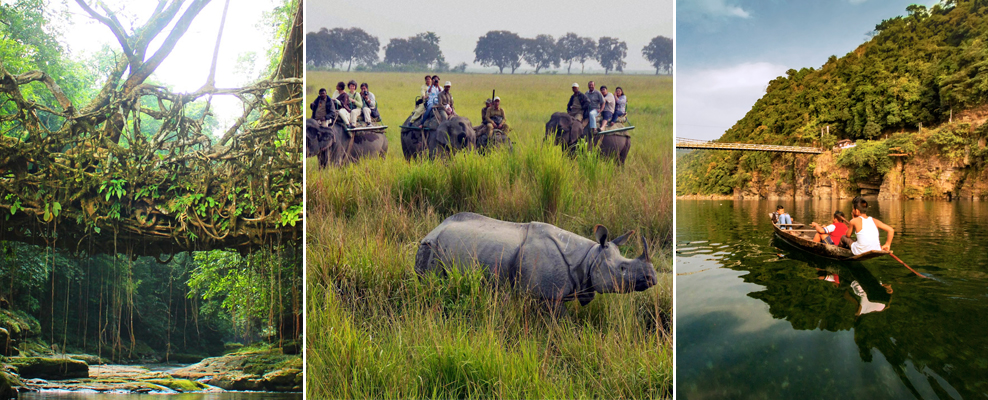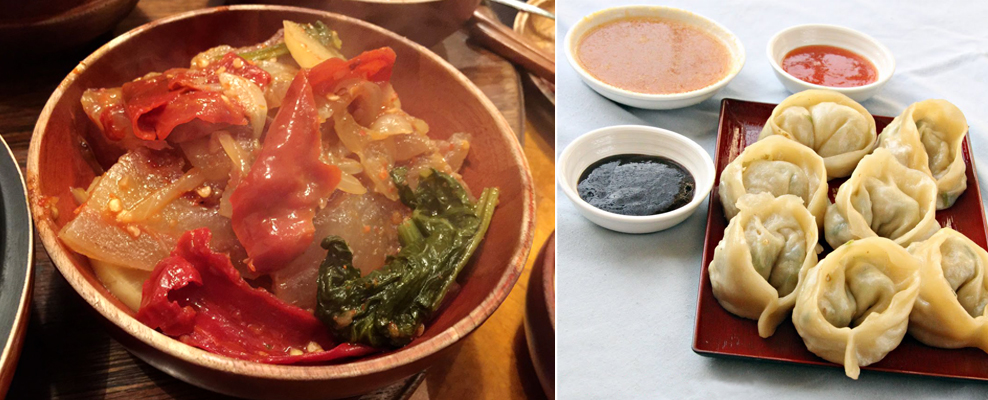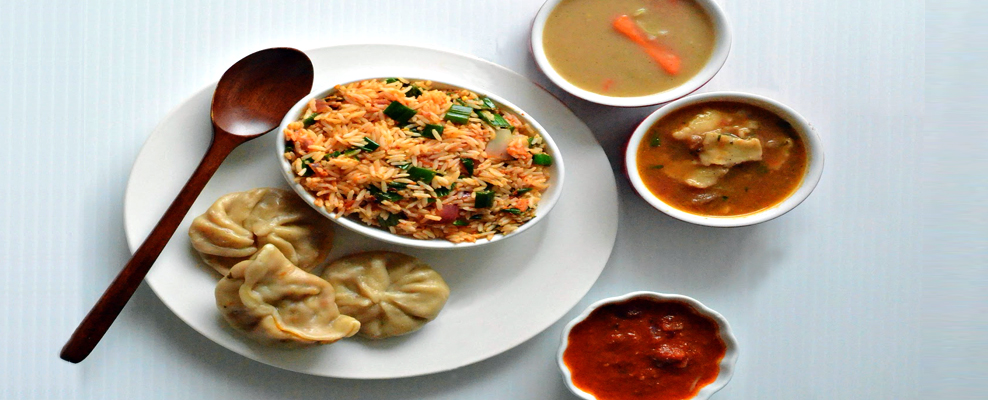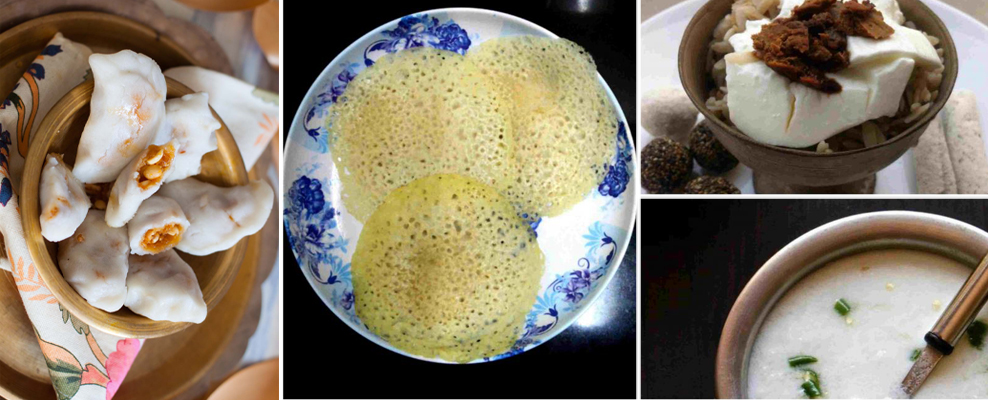North-Eastern Cuisine is an exciting blend of flavors reflecting the myriad tribes and their cultures and traditions. However, they have often been viewed with skepticism, almost contempt, at times. This write-up is an attempt to dispel at least some of the trepidation with which we somehow sample this special food.
The cuisine seems rather different initially, but, oh, when one decides to taste it (after much pondering and tentativeness), it is to die for − so savory to the palette! Those interested in knowing more about North-Eastern cuisine can read the book “The Seven Sisters — Kitchen Tales from the North East” by Purabi Shridhar and Sanghita Singh. The reader gets an insight into recipes from locals, anecdotes and socio-cultural facts which get infused into the seemingly bizarre, cuisine.

An avid traveler, I usually visit the North East in summer and explore different places. This month, I managed to cajole a friend of mine to accompany me to places like Shillong and Dawkiin Meghalaya, Kaziranga and Hatigorh Tea Estate in Assam. Oblivious to the capriciousness of the weather during this season, we thoroughly enjoyed the deluge of rainfall and the spectacular view of the waterfalls on our drive across Meghalaya. The food was simply amazing! The smoky flavor and delicate spices sent us into rapture. Jadoh – a spicy dish of rice and pork is a Khasi delicacy. An interesting fish chutney is the Tungtap, a mixture of charred fish and onions, green chilies and red chilies. Kyat, the local brew made from rice, adds punch to local festivals. To sample some of the best dishes available in Meghalaya, the RiKyanjai (03642570456) is recommended.
To move on to Nagaland, their style of cooking usually involves steamed or boiled meat and fish teamed with wholesome stir-fried greens. Different tribes use different ingredients − for instance, the Seema tribe uses Akhuni, (fermented soy bean), the Lothas mostly use bamboo shoot, while the Aos use Anish made from dried yam leaves to add a sumptuous flavor to their pork dishes. Sometimes only salt and chilies, specially the famous, very spicy, raja chili, is used in certain dishes which are served with steamed rice. A tangy, dry fish chutney and boiled vegetables on the side makes it perfect. The Orami restaurant (+919615536788) in Kohima is worth a visit.

In Sikkim, the dishes are flavored with fermented greens, dried and stored. Smoked meat and fish are also stored. Gundrik Ko Jhole, served with awesome dried fish and rice is very popular. Traditional dishes include – Momos, Thukpa, Ningro with Churpi, Phagshapa, Sael Roti, etc. The 9’ine Native Cuisine Restaurant and Bar (03592205061) in Gangtok is a place to try.
In Tripura, the cuisine is somewhat bland, though the garnish provides plenty of color. To appreciate their distinctive style of cooking, one needs to get accustomed to the pungent flavors of certain ingredients such as Shidal. In fact, vegetables are steamed in hollow bamboo frames over a charcoal fire and attain an amazing taste. Specialties like the Tibetan Thukpa and Momos are very popular. The local ‘Tchang’, which is a beer made of millet is common. Chikhvi is also a tasty, succulent dish made with stir fried bamboo shoots and sliced, smoked pork. The Kurry Klub Restaurant (03812384940) in Hotel Welcome Palace, Agartala is extremely good.

In Manipur, spices are used liberally and a lot of oil too. Several vegetarian dishes make Manipuri cuisine unique. Banana leaf plates grace the dining tables in most households. Kabok, a traditional specialty, is a combination of fried rice and a variety of vegetables. Iromba, a simple yet, exotic dish is prepared with fermented fish, mashed potatoes, fresh greens and red chilies. Another delicacy is the Nga Atoiba Thongba, a spicy fish stew cooked with boiled potatoes, fresh bay leaves, onion, cumin seeds, chilies and chives. The Chakluk Hotel on AM Road, Imphal, is highly recommended.
The remote state of Mizoram boasts of a most unusual cuisine. Herbs extracted from leaves and roots provide the uncommon flavor. Sa-um (fermented pork fat) is a part of even vegetable dishes surprisingly. Sanpiauis a popular snack prepared with rice porridge and served with fresh coriander paste, spring onions, crushed black pepper, zesty fish sauce and finely powdered rice. Vawksa Rep is a meat dish containing smoked pork, chillies and fresh greens. The taste is out of the world! The wine, made locally, is a great favorite. “Zu” (tea) is taken liberally. One must visit David’s Kitchen (03892341263), Aizawl, to get the local flavor.

Since the border of Arunachal Pradesh is intertwined with China, there are distinct characteristics of the Chinese style of cooking in certain dishes. Rice is very popular in this state. Zan, a spicy porridge, prepared with millet flour and boiling water is taken with green vegetables and charred meat. The taste is stunning and so unique! Apong, a local drink made from rice or millet is also popular. The Poong Nest on VIP Road, Itanagar, Arunachal Pradesh is recommended.

Lastly, the state of Assam closest to my heart since I hail from here has a variety of dishes to pamper our palette. Authentic Assamese cuisine is bland, yet, sumptuous. There is a huge variety of rice-based breakfast cereals with milk, yogurt or thick cream akhoi, chira, muri, komalchaul and hurum are popular. A fusion of vegetarian and meat or fish based dishes make extremely tasty food. The unique style of cooking, for instance, duck or goose cooked with ash gourd and stuffed inside plantain stalk, leave us craving for more. There is also a wide range in “pithas” (cakes).Any Assamese meal is incomplete without Khar, a unique dish prepared with raw papaya, pulses and a main ingredient. They are then filtered in water through dried banana ashes for a flavor that is most unusual! Another sumptuous delicacy from Assam is Kumuratdiya Hanhor Mangxo, a duck meat curry cooked with Ash Gourd (lauki). The Khorika Restaurant (+919864982948) in Guwahati is highly recommended.
